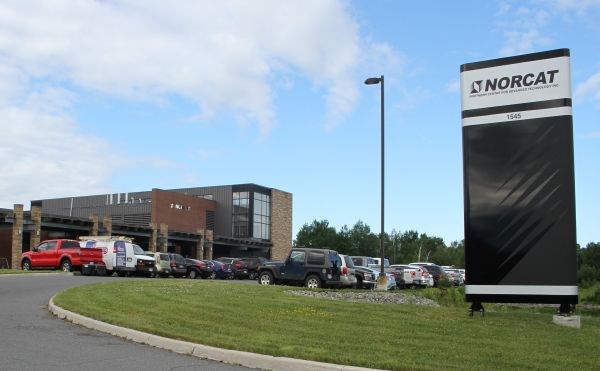NORCAT's reputation as an incubator for innovation goes beyond the tenants working there.
The institution has been opening its doors for special events and conferences at its Sudbury location ever since it opened. Even then it reached out to the community to help groups plan and host everything from retreats to media events and challenges.
From boardrooms to hallways and easy-to-reconfigure open spaces, the innovation centre works with almost any group or organization.
“We are willing to put in sweat equity to make any project a success. We help to a degree,” said Hugh Kruzel, special project co-ordinator.
“If it's a ministerial announcement, we're there, but more often than not they bring their own people and they know what they want.”
A lot of the work NORCAT does is liaising with people to understand what they can and cannot do for what he called “guests.” They have helped to rent out spaces in other venues in the city and have close contact with many service providers and caterers.
They can't rent to just anyone, Kruzel stressed, but when someone contacts them with a valid reason for meeting at NORCAT and that end of the city, they are happy to do what they can.
“It can be a matter of carbon footprint. If they are already in New Sudbury, why meet at the south end public library when they can come here?” he explained.
Tenants get priority, Kruzel said, as they are already in the building, but they work to make sure there is a welcoming atmosphere for everyone from staff to visitors.
He cited Operation Red Nose, a tenant in NORCAT. They have their communications centre there and hold their volunteer welcome and appreciation events at the building.
The differences between what kind of meetings can be hosted at NORCAT is often time of day. Reading Town, a forum for writers and poets in several
languages, he said, held their dialogues there in the evenings, which he described as informal. Chairs were set up for speakers, a moderator and an audience for the proceedings.
“It started with using one of the hot desks for two or three months to get programming in order and they asked if they could use the space on a Saturday morning, and we said it was fine as long as it didn't conflict with anything else happening that day,” Kruzel said.
NORCAT is already famous for hosting the Sudbury Game Design Challenge, where teams square off to create simulations of their own.
NORCAT was built and designed to accommodate groups and tenants for short and long-term residency. Kruzel explained the way the building is designed there are many spaces that can be utilized to host events.
There are several meeting and conference rooms with various amenities like flat screen TVs and WiFi, as well as aesthetic aspects like natural light from large windows. Many of the tenants can also move temporarily or open their space to allow other groups.
Even the parking lots and front building space is designed for events in mind.
“The front walkway, it's like a patio — we can have meetings, registry desks; it's very inviting, like a garden,” he said.
“We've blocked off the front parking lot for events before and the back lot dividers have rings on them to rope off sections. The one part people say they love is the garage doors on spaces. They can host an event outdoors and indoors at the same time.”
There's even a quiet room for religious purposes, or for people needing a space in case of a personal crisis.
They've been creative with their spaces in the past and have others they are considering. The main hall in the front of the building is big enough to host an event, with wall space to hang a projection screen.
The second floor open space is designed as another open-concept space with a lot of natural lighting and hot desks, which are desks people can lease to do work, and furniture can be moved to suit whatever is needed.
It's also about cost. Much of the furniture in the space is very cost-effective, he said, pointing out tables were made for them from jade-cutting castoffs and chairs taken from other sites for free.
“We try to be creative, utilize what we have,” he said.
